Interview with Jenny Stock, Underwater Photographer
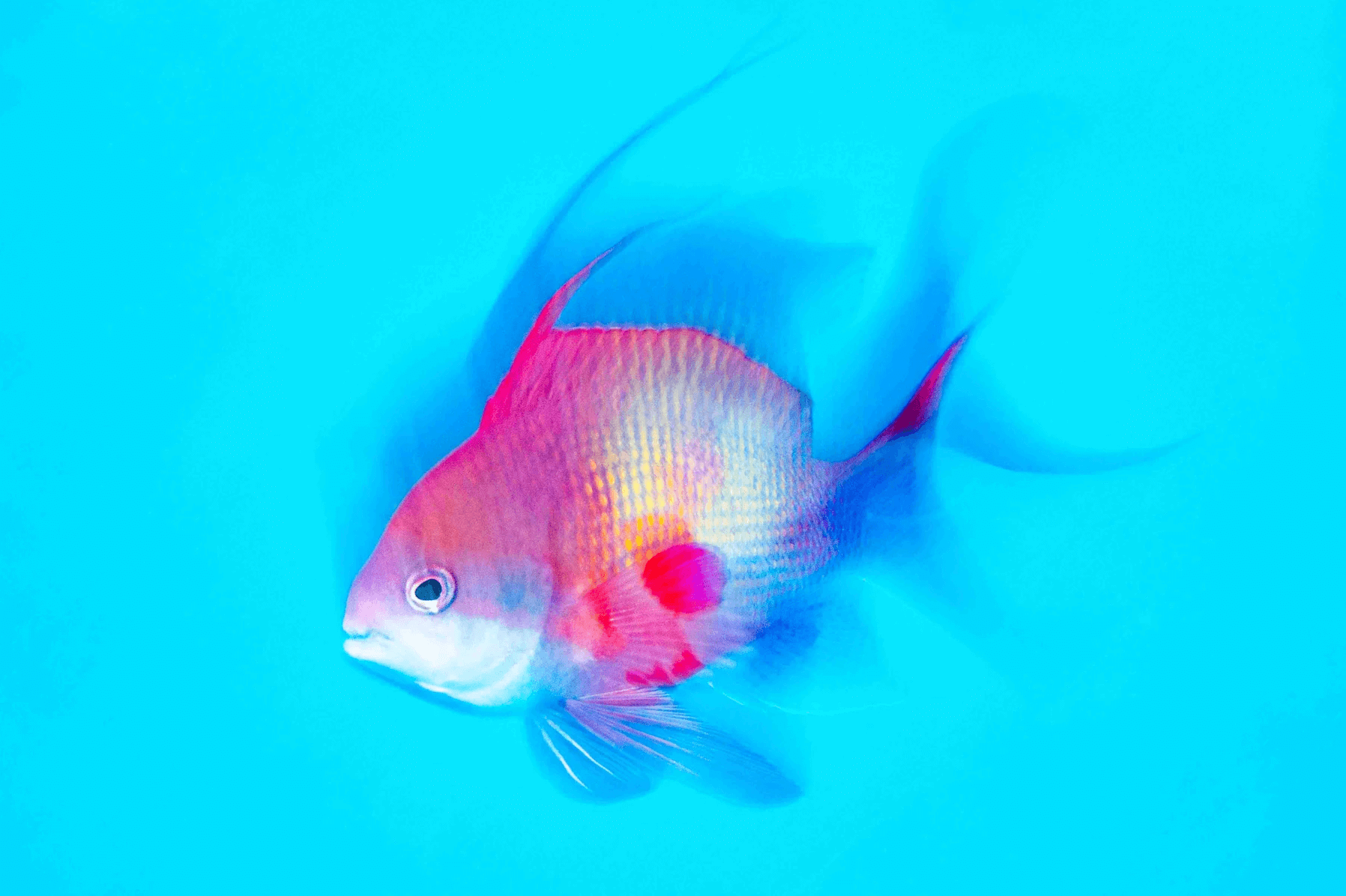
AA: I’m excited to introduce you all to someone that fully immerses herself into the natural world and shares her experiences through her photography, which… makes my mind explode with inspiration and wonder. Hello Jenny Stock, thank you sharing your work and stories with us!
JS: Thank you for the interview! It’s always lovely when someone appreciates my artwork.
I’ve spent so much time and energy being absorbed by the underwater world of aquatic animals, so when my images speak to someone it makes me feel as if I’m moving in the right direction. I hope my photos will inspire your readers.
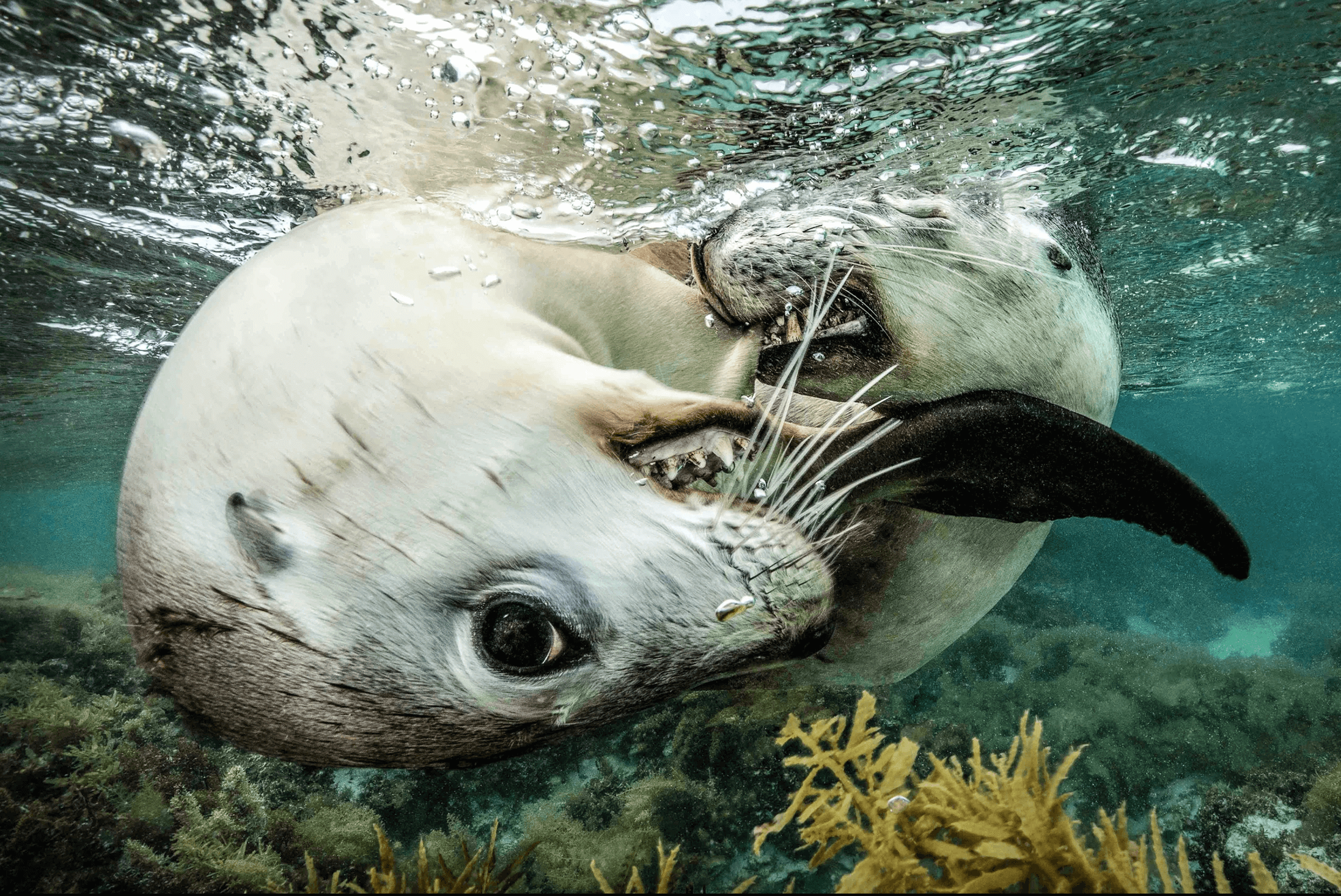
AA: Being from Maine and living on the coast, I’ve had the pleasure of seeing and being around seals and sea lions most of my life. But I have never played with them underwater! I love your stories about being underwater and playing catch with you. Would you please tell us about that experience?
JS: Yes! Sea lions are the puppies of the sea, so playful and fun to be around. I was lucky enough to have a work trip that took me over to Western Australia. Once I was in the area I made it my mission to go to Jurien Bay Marine Park. After an hour on the boat we stopped at an island where a colony of sea lions lived. I jumped into the warm water with my snorkel and camera and immediately these mischievous sea lion pups darted directly over to join me. Thriving on the attention, this mischievous pair began play-fighting. Chasing, gently nipping and propelling themselves out of the water (sometimes landing directly on me), these ‘puppies of the sea’ even brought me a starfish to play fetch with.
If, for a moment, their attentiveness diminished I would simply spin round and round in the water – a behaviour which they delighted in. They would display their enjoyment by mimicking me back in response. Experiencing these big-eyed frisky mammals perform their aquabatics has been one of my most precious moments underwater. This image also won a category in the photography competition Deep Indonesia International.
AA: How did your life and work evolve in a way that led you to these underwater experiences?
JS: As a kid growing up in the north of England, I loved television and I set my heart on working in production. I took a BBC-affiliated degree at Leeds University. It gave me lots of practical experience in a variety of disciplines. Camera work stood out as the most fun – a lovely balance of artistry and technical. After I finished my degree I started employment at the BBC in Television Centre, London. Here I quickly advanced to being a self-shooting documentary maker. This allowed me to have a camera in my hand every day at work.
I then pushed myself further by combining my love of media with my developing passion for diving. I passed my HSE4, a qualification necessary to be employed as a diver in the UK. This led to me working below the surface on blue-light documentaries and in drama. At this point I was given a superb opportunity when I was offered a job as a stunt double on a Hollywood film, and went on to shoot the film’s publicity images underwater.
I then progressed to shooting more nature photos. Although I love my career in film, I find a unique, purer pleasure in photography as it allows me to have full control of my own vision. Conveying a story in a single image is in sharp contrast to my documentary work, which relies on a production’s collaborative efforts and time for an audience to watch an unfolding narrative.
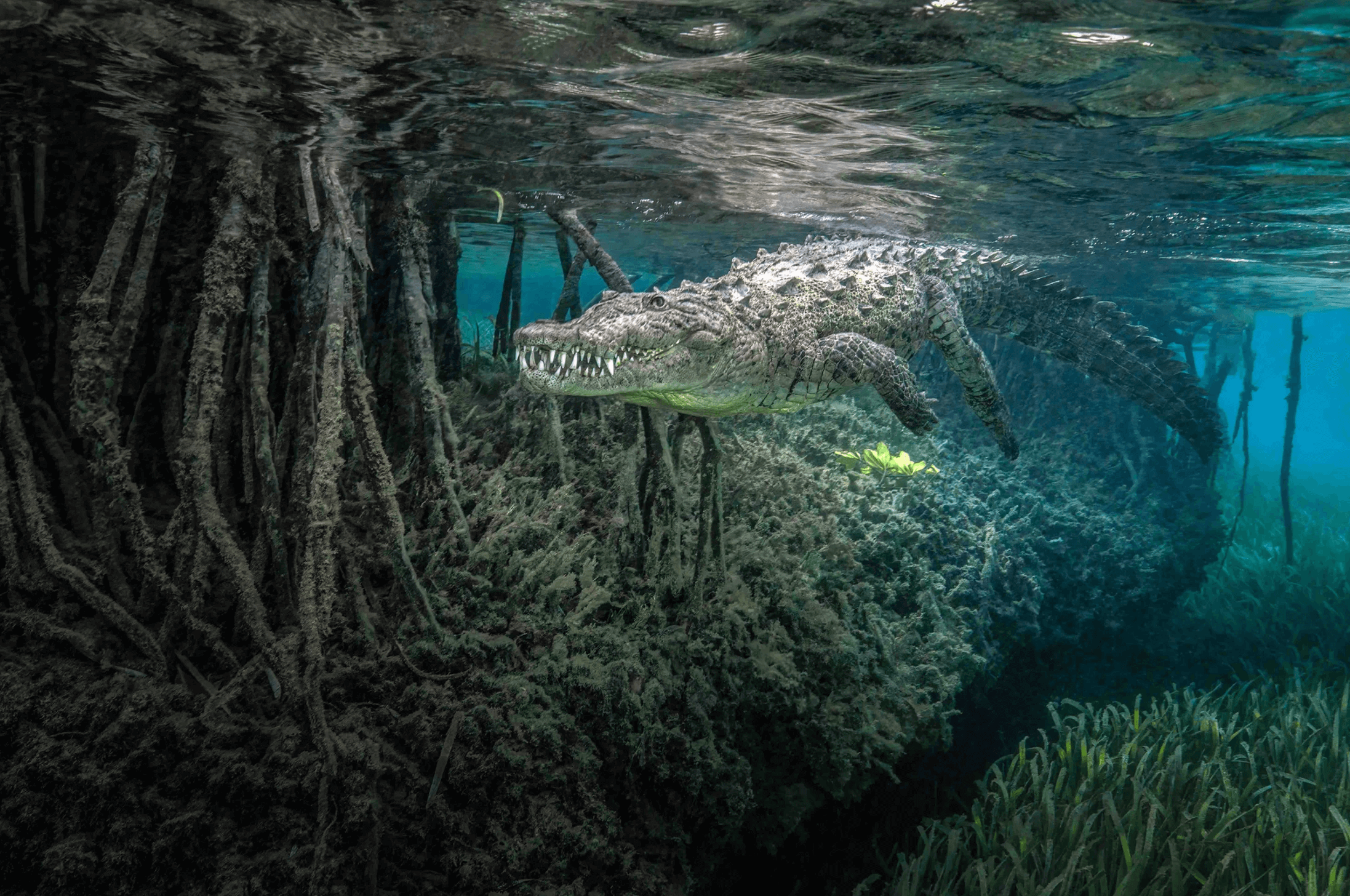
AA: My heart is racing at the idea of you being in the water with a crocodile in the wild. What was it like being with that creature in their own habitat, the mangoves? Did you feel any connection? Do you think the croc trusted you?
JS: For years I was terrified of crocodiles. Then, like the flip of a switch, I longed to swim with one in the wild. I travelled with some friends to Jardines de la Reina in the south of Cuba. Once there, a twenty minute speedboat ride took me to the clearing where I spied this hefty beast, basking in the shallow waters of the mangroves. Mangroves are important habitats for crocodiles as they use the shelter of the roots for every aspect of their life cycle including; feeding, breeding, nesting and raising their young.
Eventually I plucked up the courage and gingerly slid into the water. I approached the six-foot crocodile with my camera in hand. As I moved towards it, it moved towards me. Exhilarated I took lots of shots, remaining alert as it brushed within centimeters of me.
One crocodile can go through over 8,000 teeth in a lifetime. Over a number of days I kept visited the croc. Often sat with its mouth slightly agape. Photographically, its open mouth seemed a great place to be photographing. What is a crocodile without teeth?
Underwater animals are usually apprehensive of humans. They mainly swim away from you. To take good photos you need to be lucky enough to get close as creatures are skittish in your presence. Not these apex predators. After a few swims with the crocodile, it got more and more confident until it started to test me out, nudging my camera with its toothy snout. You need to be aware of when to not push an animal, it was at this point I decided to get back in the boat.
This really was an exhilarating experience though and the photos I got from the adventure are some of my all time favourites and have won and featured in competitions such as Ocean Geographic, Underwater Photographer of the Year, Ocean Art and Mangrove Action Plan. They are such characterful animals. I’d love to go back and see them again.
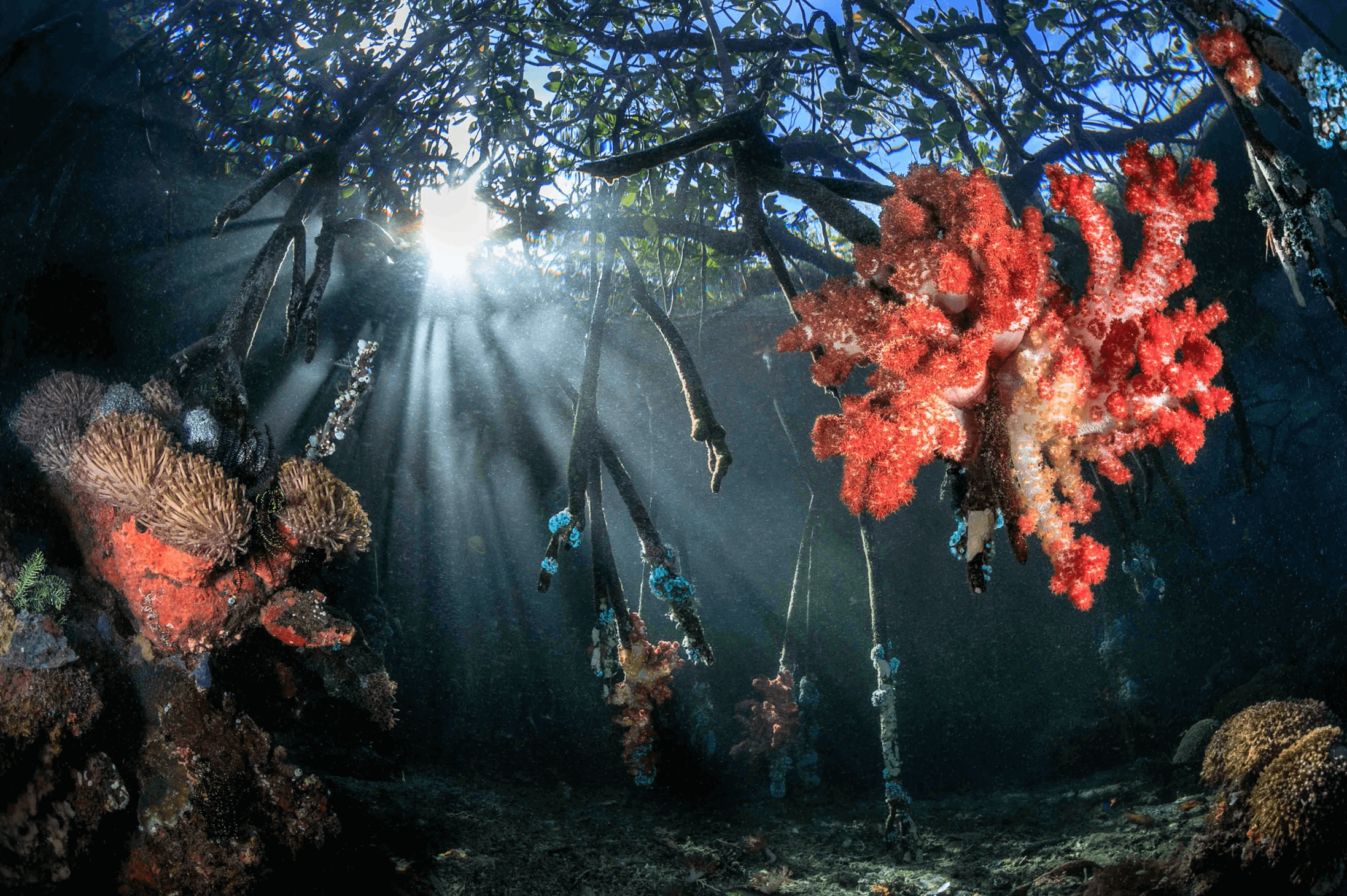
AA: Mangroves Heart and Lungs may be my favorite photo. What a magical image that is, like a fairy tale. What was it like down there?
JS: In the peaceful waters of Raja Ampat Indonesia, beneath a canopy of mangrove forest this stunning soft coral thrives on the roots of a tree. Its bursting shape and reaching fingers echo the sunbeams captured behind. Within this image the rays of light stream through the vista, illuminating weird and wonderful shapes in this otherworldly landscape. You’re right is absolutely magical!
However, it’s a very challenging environment to shoot as the floor-bed is made up the rotting leaf litter from the mangrove trees and if it gets even slightly touched the sediment will rise and ruin the visibility of my shoots. Therefore, I had to be very slow and gentle in my swimming kicks so as not to compromise the image with this ‘back scatter’ (particles of dirt, kicked-up into the water). It’s a fascinating place to be, but you must be very careful with your body movements when capturing images.
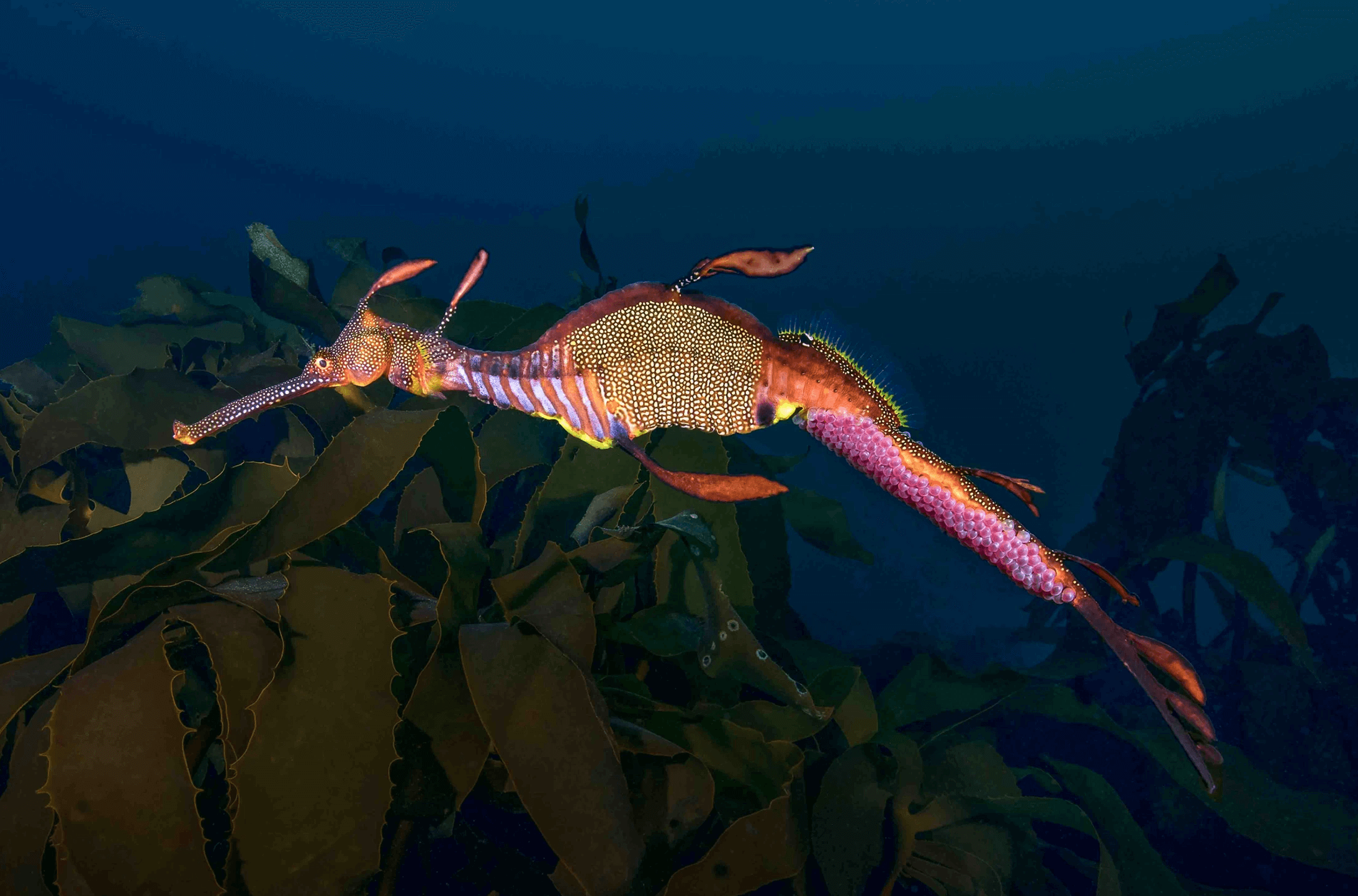
AA: Is there another creature so colorful? I am not alone in my wonder about Sea Horses and amazed at how they give birth and that the males carry the young. They seem so otherworldly to me. What was it like to be up close and personal with them? Do they stay in family clusters?
JS: Unbelievably these creatures are actually very well camouflaged and hard to find. It is only when they are lit up by flash guns that you see the vivid colours and patterns. Weedy Sea Dragons are endemic to Australian temperate marine waters, so you can only see them if you make the effort – which I did… After flying to Tasmania I took a small motor boat out with some local dive guides. At first when I got in the water I was quite panicky as it was so cold but as soon as I looked down I saw a sea lion shoot past me and I knew I was going to be ok. The guide set off and we swam down to the sea bed where yellow kelp swayed in the swell of the tide. This can induce sea sickness so you have to really concentrate on your task. Eventually the guide found a few dragons. They were larger than I envisioned at 45 cm/18 inches long. They were so very beautiful though. This one had fresh eggs ready to hatch down his tail. Fertilised eggs take up to eight weeks to fully form and then the brood can produce up to two hundred and fifty hatchlings. This image was featured in Australian Geographic and was displayed in the Australian Museum in Sydney.
Seahorses are slightly different, they are more ‘up and down’ in their gait and after mating they keep their young in a pouch. I’ve never seen either dragons or seahorses hatch or give birth – that would be amazing!
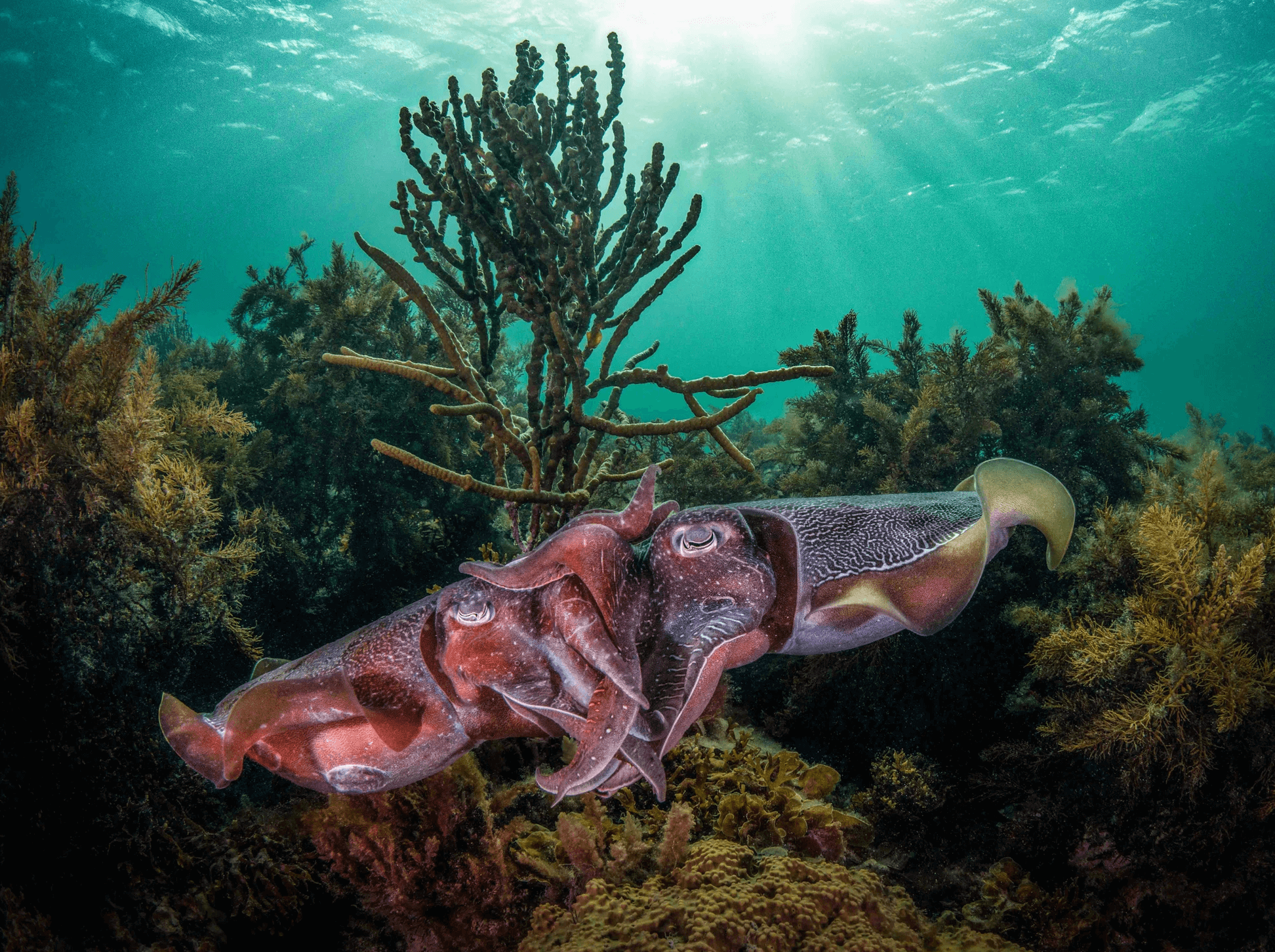
AA: How special to see with your own eyes how these sea creatures mate. You captured the most beautiful photo with the coral and light. Will you please share more about this and what it felt like to you? The energy must have been incredible to experience.
JS: I’m usually completely focused on shooting images, it’s not often that I’ll put my camera down and just watch what is going on in front of me. However, the annual cuttlefish mating season in Whyalla, South Australia, was one of the most bizarre and fascinating experiences I’ve had and at points I just had to put the camera down and watch.
In courtship cuttlefish embrace tentacled heads and mate whilst swimming together. I was lucky enough to see this pair copulating in their underwater Eden, back lit by the rays of the sun.
Learning about their reproduction process is just as fascinating. Cuttlefish mate head-to-head with their tentacles wrapped around each other’s faces. Once locked with a female, the male uses a special tentacle to insert sperm sacs into a receptacle chamber near the female’s mouth. He may try to remove the sperm sacs of rival males who have previously mated with the female using jets of water. Female cuttlefish store their eggs in a separate chamber and are able to decide which male’s sperm she wants to fertilise her eggs, if she has more than one source in her pouch.
During all of this the animals flash their skin using chromataphores which they use to signal each other. It really feels like watching aliens communicate with each other.
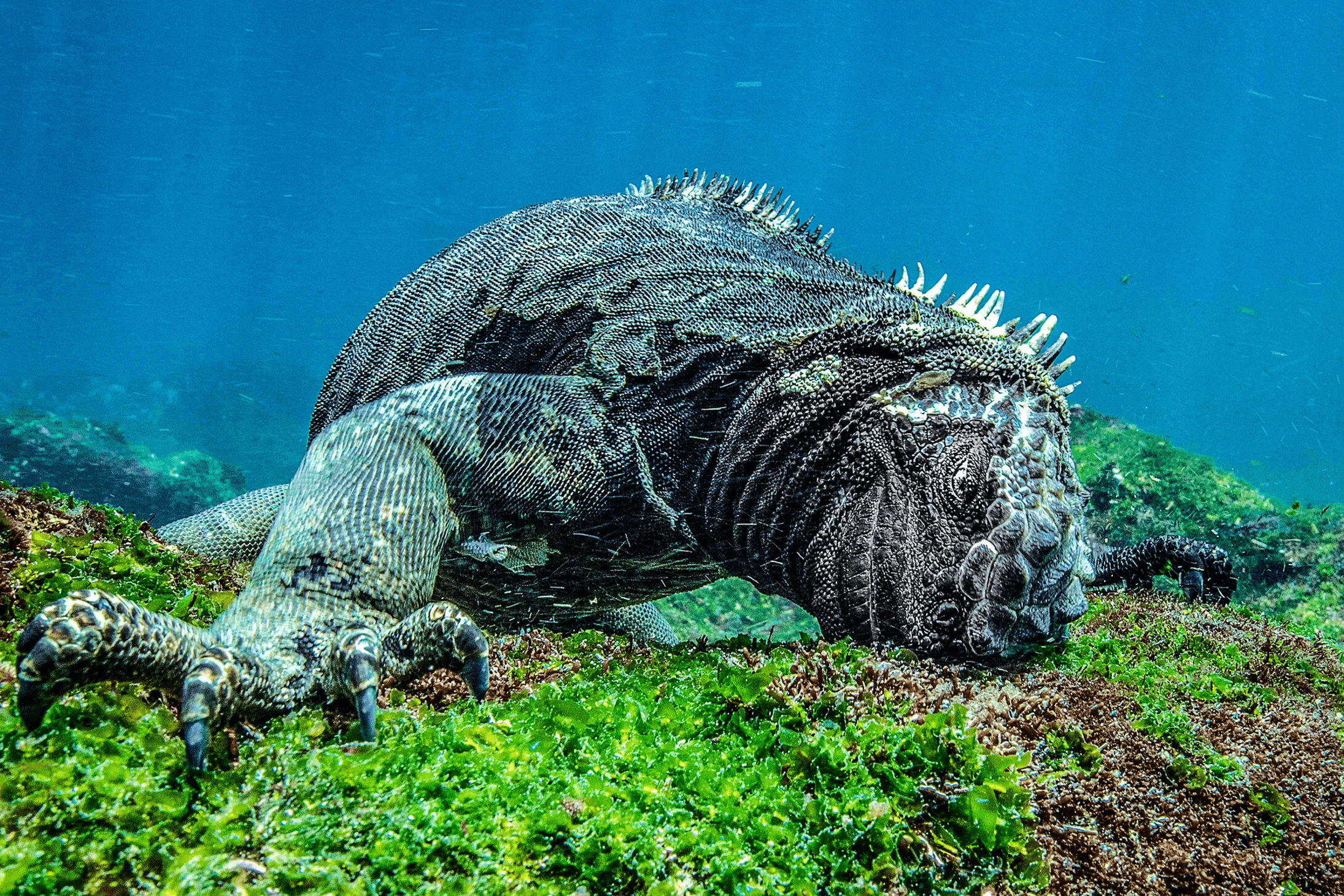
AA: The Galapagos Islands must have been a thrilling adventure for you. I have always wanted to see those giant iguanas. And you swam underwater with them! Please share that experience with us.
JS: The Galapagos is a wild marine reserve protected by law. Within the reserve tourists have restricted access to Fernandina Island, which is where these marine iguana reside. I was only allowed a couple of hours at this location so it was a challenge to capture a photo I liked. The animals move incredibly fast so it feels like you’re spending a lot of time swimming after them. The best opportunity you can get, is when they are head down, munching on their dinner. Surprisingly marine iguana are vegetarian, they only eat algae. I don’t think i nailed the shot I wanted of this animal, I wanted eye contact and iguana looking in the camera lens… so I’ll have to go back and try again!
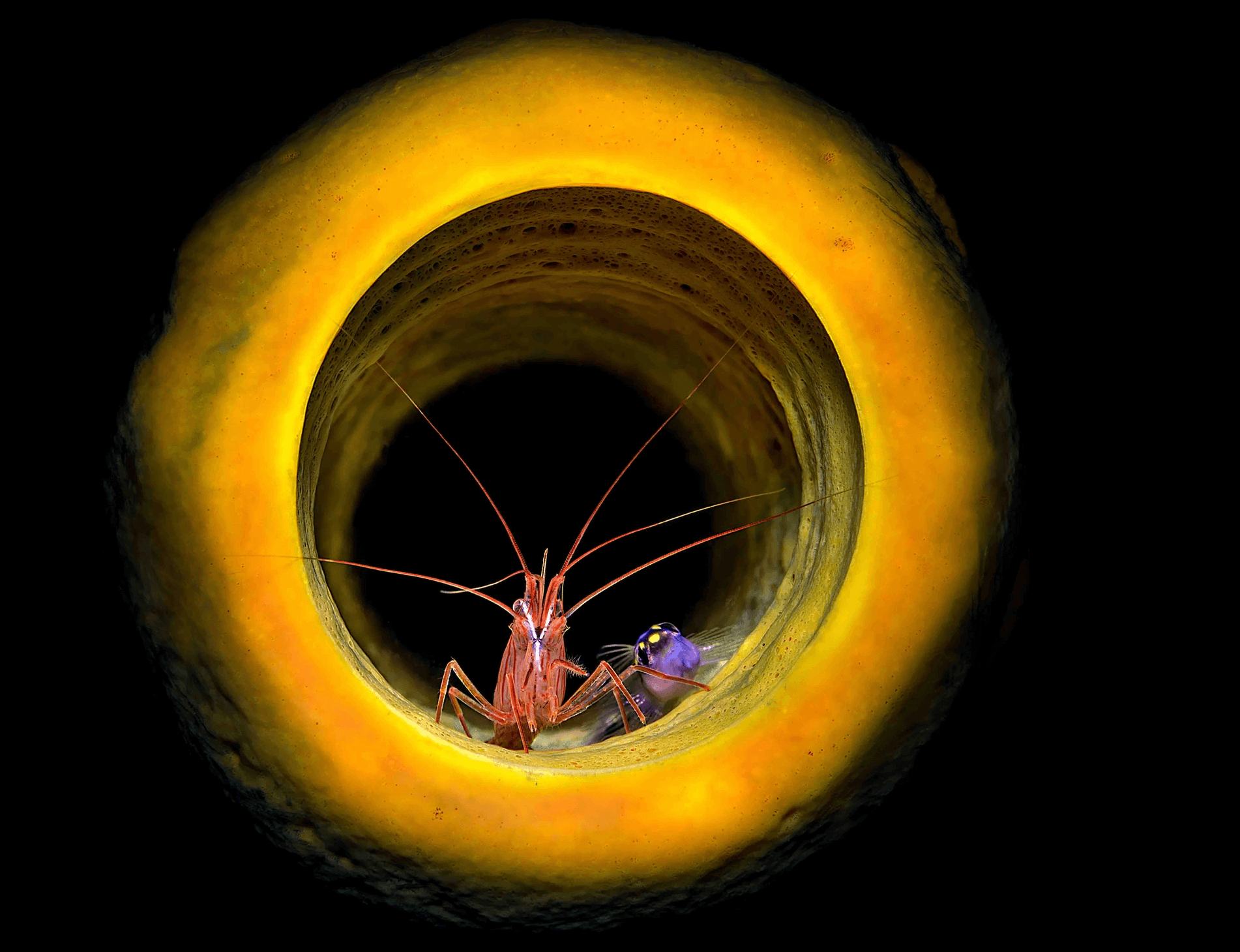
AA: I love the Goby and the Shrimp. What a beautiful friendship they have. I should include the beautiful golden sponge in that awe as well.
JS: In this picture you can see two interesting animals living inside a spherical yellow sponge. Despite being different species these creatures have a symbiotic relationship, meaning they both benefit from their relationship.
The shrimp have very poor eyesight, which makes them dependent on purple goby fish to see potential dangers. Goby can differentiate between predators that pose a threat, and harmless fish. The goby will send a warning signal (a special tail flick) to the shrimp when there is danger. The shrimp and goby usually maintain contact through the shrimp’s antennae as it touches one of the goby’s fins, to ensure any warning signals are received. What a cool pair of pals!
It’s common to see goby in a sponge – but rare to see both of these animals together. I was really happy when I saw these two looking back at me, perfectly framed in their home. This image recently featured in Close Up Photographer of the Year and also British Photographer of the Year competition.
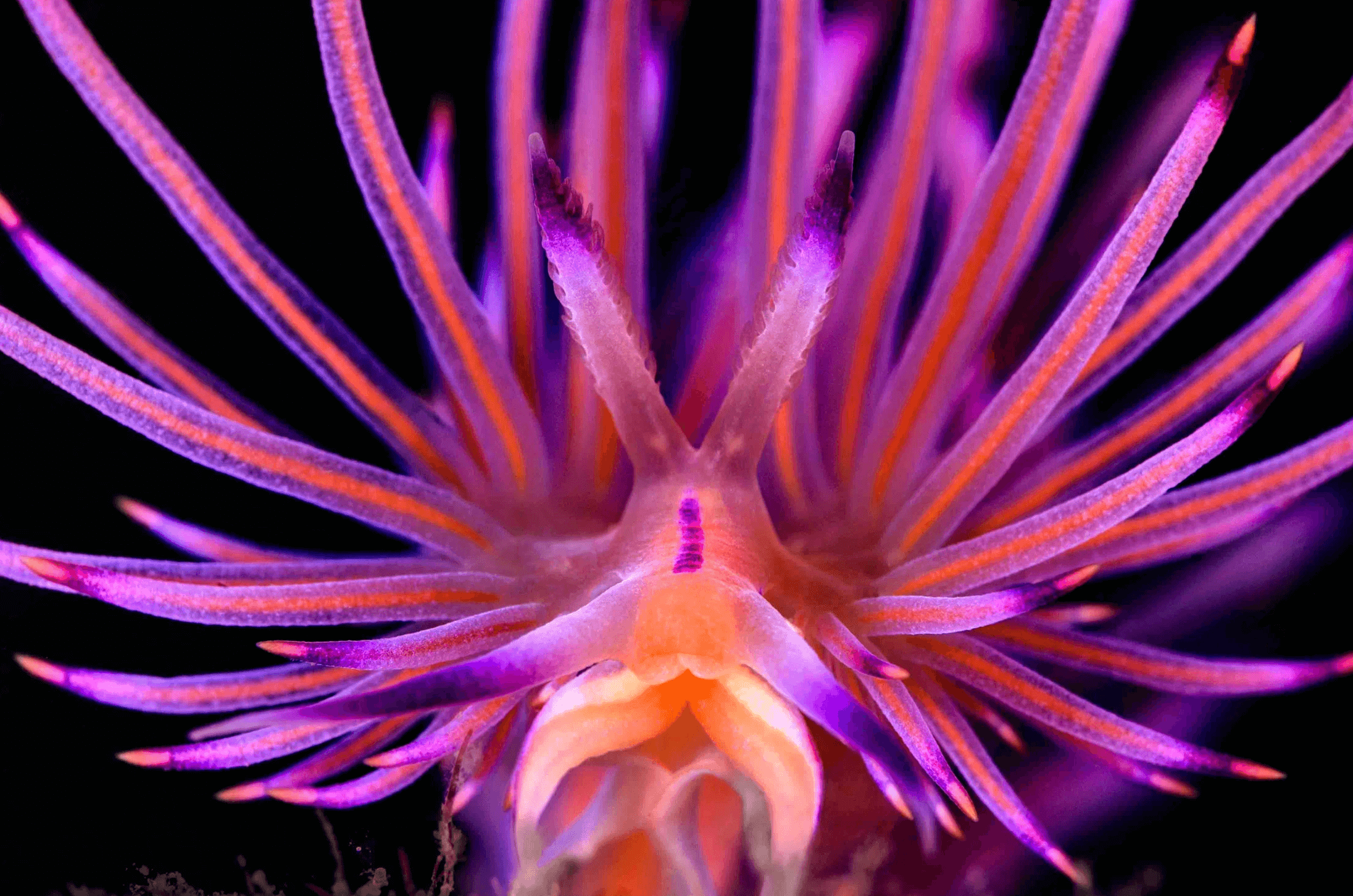
AA: The Lotus is one of the most beautiful things I have ever seen. Please tell us more about that river and what you saw down there.
Nudibranch, or underwater sea slugs, come in a variety of eye-catching colours. By using aposematism (vivid tones and hues) they warn potential predators that they should not be eaten as they are toxic. Although nudibranch may be the colour of delicious candy, they would not be sweet to taste! The defensive mechanism of this incredibly vibrant nudibranch is exactly what attracted me to it.
In 2019 I spent six months filming “Crikey It’s the Irwins” (with Steve Irwin’s family) in Queensland, Australia for National Geographic. I spent every weekend I had off photographing nudibranch in the Mooloolah River with Nudibranch experts Gary Cobb and Sheryl Wright. Often the site was heaving with nudibranch and one day when the conditions were fantastic, I got this shot of a very peaceable Flabellina lotus. I felt the image was a cracker and I was delighted when it won a first place in Ocean Art Competition.
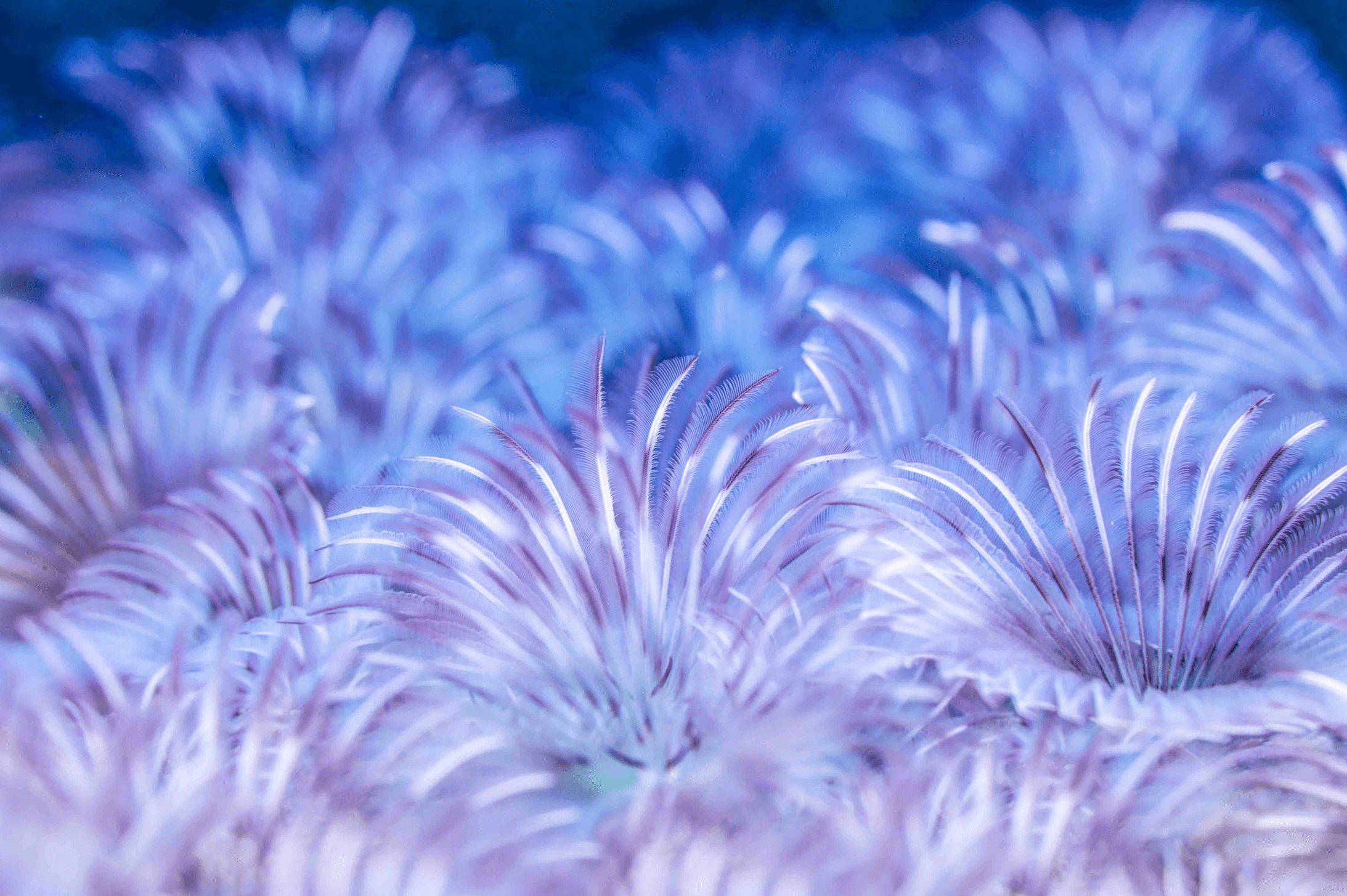
AA: Tell us more about these cuties!
JS: Feather duster worms are fascinating as when they are threatened, they retract rapidly into their tubes to avoid being eaten. It’s great to watch them do that, but the real challenge is getting close enough to take a photo before they shoot away into their protective tube. These worms are commonly found in oceans worldwide, particularly in coral reefs, rocky substrates, and sandy seafloors. They often come in brown but when I came across this tiny blue forest I stopped and took the time to take a lot of photos.
AA: Okay, now please share your experience as a stunt diver. That is a rare profession.
JS: Being a stunt diver was absolutely awesome. To work underwater legally in the UK you need a qualification from the Health and Safety Executive. I took the week-long course which tested my ability to do underwater tasks like screw bolts together in horrible ocean conditions whilst in a drysuit in Plymouth in the UK. I’m not good with the cold and my suit was leaky so it was quite painful, but thankfully I passed the practical and the written examinations.
My friend is a producer in film and co-incidentally she was looking for stunt diver and body double for Claire Holt (an Australian Actress) for the Hollywood film 47 Meters Down. I passed the physical look-alike test and got the part. To pass as Claire they chopped my very long hair to a bob and bleached it blonde. During some scenes I had large prosthetic makeup patches on my legs to mimic shark bites – that was so fun!
The film was about two girls who are cage diving in Mexico, when due to a series of unfortunate events, they end up at the bottom of the ocean trying to make their way to the surface dodging huge sharks. We filmed for a month in London and a couple of months in the Dominican Republic, in a very large infinity pool owned by Pinewood Studios (the production house that makes James Bond films).
Looking back now I feel incredibly privileged to have been given the opportunity to work on the production.
AA: That sounds like a very adventurous assignment and an incredible opportunity. What places or creatures would you like to go visit that you have yet to see/meet?
I dream of swimming with sea otters but I’ve never had the pleasure of meeting one yet… Some animals are much harder to plan and implement taking images of. If they mainly reside in cold water that’s an added difficulty for me!
AA: What can you tell us about the experience of being so close to these creatures – in their own habitat? Have you had a deeper connection with anyone(s) in particular that you can share with us?
JS: Many animals seem to be genuinely interested in what I am or question what the camera is. My camera has a big glass dome port on the front and animals can see their reflection in it. They will often react with curiosity to that. Whale calves were particularly interested in what I was doing and would circle me until their mum would signal ‘enough’ and they would leave together.
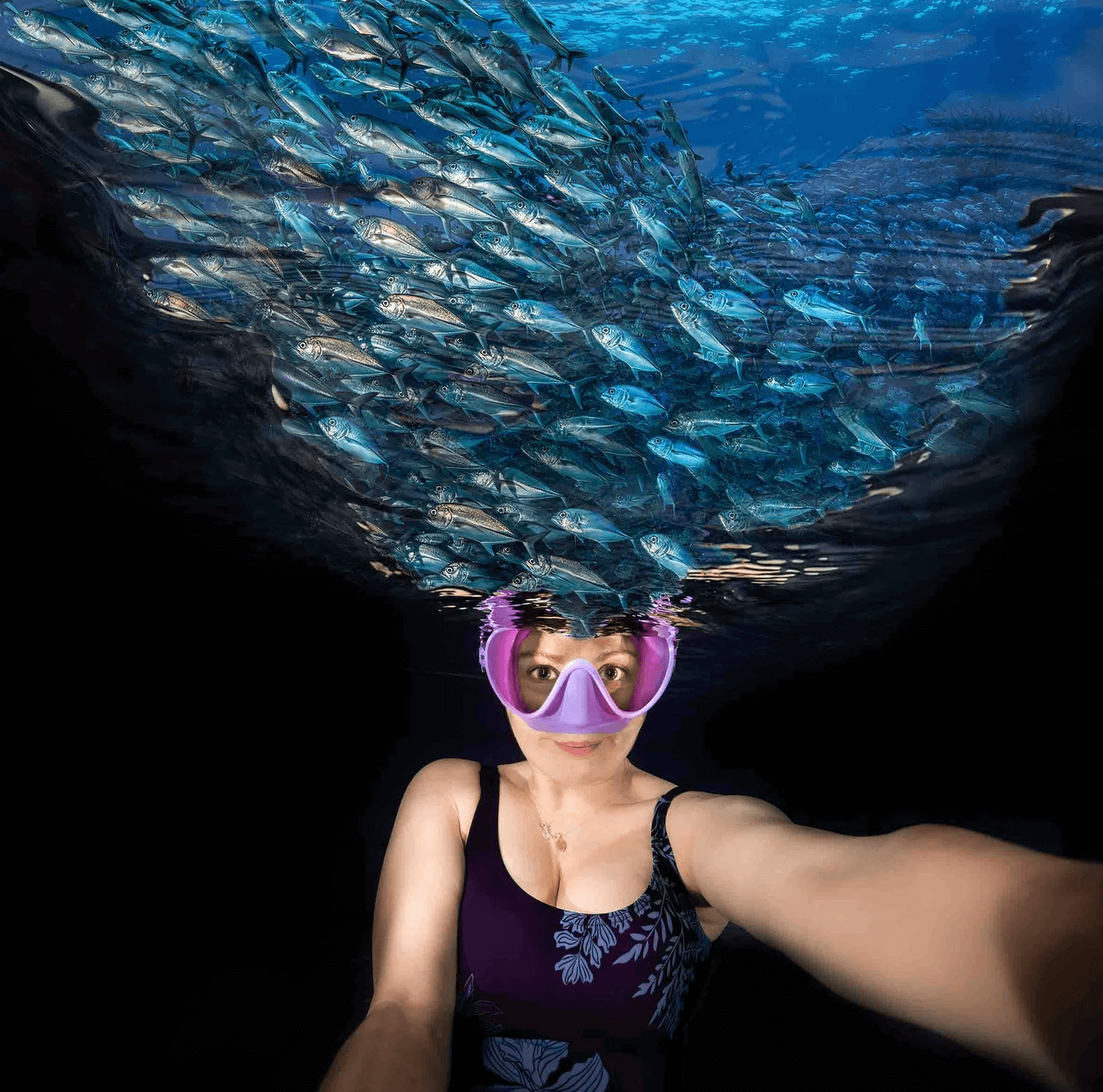
AA: What advice do you have for someone that is interested in experiencing the underwater world, but not trained as a diver?
JS: You can see a huge amount of incredible wildlife and nature without requiring expensive equipment or even learning how to dive. A snorkel, mask and curiosity for what’s beneath the surface of the water is all you need! It is best to get advice from local people before you get in the water though and remember – safety first! If you really don’t want to get wet you can get on boat trips to see whales or dolphins.
Having said that, learning to dive is an amazing experience and I promise you it’s very easy to master. All you need to do is to remember to breathe. It’s very good for meditation and gives you an appreciation for wildlife, underwater you forget all your problems!
AA: That sounds like a great remedy for forgetting your problems – just dive underwater! Thanks so much for sharing your adventures and amazing work with us! Your work and the stories about your experiences underwater are otherworldly. These creatures trust you and you have a very special gift. Our heartfelt gratitude to you, Jenny – and all of the plants and creatures you have introduced us to. Xoxo angela
Follow Jenny on Facebook and Instagram to keep up to date on her adventures. Prints of her work can also be purchased online at her website.